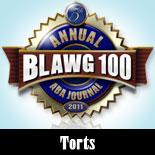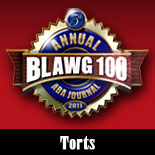The question for today: Might emoticons assist in a hearsay inquiry?
That’s right. I just wrote that. Let’s back up a bit and I’ll explain why that’s on my mind.
Carole Gailor of Raleigh, North Carolina recently spoke at a North Carolina Bar Association conference on the rules of evidence as applied to electronically generated information. In so doing, she remarked upon the authentication and admissibility hurdles that litigants must confront when attempting to introduce electronic or digital evidence, such as emails, computer generated reports, social media profiles, and other such information. However, she made a stray remark which prompted the law nerd in me to take particular notice. Ms. Gailor noted that an emoticon might, in fact, assist in the analysis of whether a digital piece of evidence is admissible.
As a preliminary matter, we could turn to Wikipedia or Urban Dictionary or the like to find a formal definition of the term “emoticon.” But that’s not really necessary, is it? But everyone knows that they are the little smiley or frowny faces – or sometimes far more complex textual graphics – utilized by writers on the Internet to convey all sorts of present emotions.
But why bother with a lay definition? A number of courts have already tackled the term.
A Westlaw search reveals that there are 26 reported state and federal cases which reference the word “emoticon” in the singular or plural, the earliest citation coming from 2004. A handful of them cite to United States v. Cochran, 534 F.3d 631, 632 n.1 (7th Cir. 2008), which itself cited the Merriam Webster online dictionary. The most recent is this year’s State v. Jacques, 798 N.W.2d 319 (Table), at *1 n.2 (Wis. Ct. App. 2011) (per curiam). (“An ‘emoticon’ is a ‘group of keyboard characters … that typically represents a facial expression or suggests an attitude or emotion and that is used especially in computerized communications’ such as e-mail or instant messaging.”) (citing Cochran). There are other cases, as well. State v. Nero, 1 A.3d 184, 191-92 n.9 (Conn. Ct. App. 2010) (“An emoticon, as it is called in Internet vernacular, is a little cartoon face that can be added to the text of an instant message. The faces come in numerous expressions and are used to illustrate how the speaker is feeling or the intended meaning of what he or she has written.”); State v. Prine, 13 So.3d 758, 761 (La. Ct. App. 2009) (noting that an emoticon is “an online mode of expressing emotion”); Spanierman v. Hughes, 576 F. Supp. 2d 292, 312 n.13 (D. Conn. 2008) (defining emoticons as “symbols used to convey emotional content in written or message form (e.g., ‘:)’ indicates ‘smile’ or ‘happy,’ and ‘:(‘ indicates ‘frown’ or ‘sad’).”).
Most of these definitions state pretty clearly that the emoticon, by its very nature, is designed to convey the emotional state of the author of the statement which it accompanies.
The interesting question raised by Ms. Gailor is whether emoticons, in providing the recipient with a precise state of mind of the sender, aid in the admissibility inquiry.
Let’s turn briefly to the Federal Rules of Evidence. Where might emoticons be relevant?
What about a “Then-Existing Mental, Emotional, or Physical Condition” under Rule 803(3), defined as “[a] statement of the declarant’s then-existing state of mind (such as motive, intent, or plan) or emotional, sensory, or physical condition (such as mental feeling, pain, or bodily health), but not including a statement of memory or belief to prove the fact remembered or believed unless it relates to the validity or terms of the declarant’s will.”?
That’s certain possible, and it might be that an emoticon could provide the statement with additional context to overcome a hearsay challenge. If you could define or interpret the specific emoticon and argue that it established “then existing state of mind” or “mental feeling,” you might convince the court that the declarant’s statement can come into evidence.
Here’s a more fun one. Might an emoticon indicate that a statement is an “excited utterance” under Rule 803(2), defined as “[a] statement relating to a startling event or condition, made while the declarant was under the stress of excitement that it caused”? Maybe. That’s a bit trickier, because usually an excited utterance is spoken, not written. When excited, agog, or what have you, what declarant will pause to write a note? However, in the past decade, the deliberate nature of a writing has become, shall we say, far more casual in the era of text messages, Facebook, Twitter, and the like. The spontaneity of instant messages, texting, tweeting and other such forms of new communication make it more likely that a communication is truly instant.
In 1998, a Massachusetts court focused on the issue of whether a particular writing, a fax sent several hours after an assault and battery, could be a spontaneous exclamation and thus not barred by the hearsay rule. Commonwealth v. DiMonte, 692 N.E.2d 45, 48-49 (Mass. 1998). In so doing, the court noted:
The defendant argues that the acts of drafting and transmitting a facsimile message deprive it of the spontaneity required by the hearsay exception for spontaneous exclamations. Writing, he contends, is an inherently premeditated process; manipulation of a facsimile machine, once a message is written, is an additional deliberated sequence of actions. He further argues that the recipient of a written message has no percipient experience of the sender at the moment when she writes and sends the message, and cannot testify to the sender’s demeanor, tone of voice, or degree of observed excitement or stress. The arguments are persuasive.
Those concerns – written when the communications infrastructure in place was far, far different than that of today’s are now 13 years old. Wouldn’t an emoticon provide some context in lieu of the percipient experience of the sender at the moment of the writing? Wouldn’t the instant nature of text messages or digital writings ameliorate the issues addressed by the court?
Now all we need is a text case.
(This post was originally posted on the now defunct North Carolina Law Blog on December 7, 2011).
















